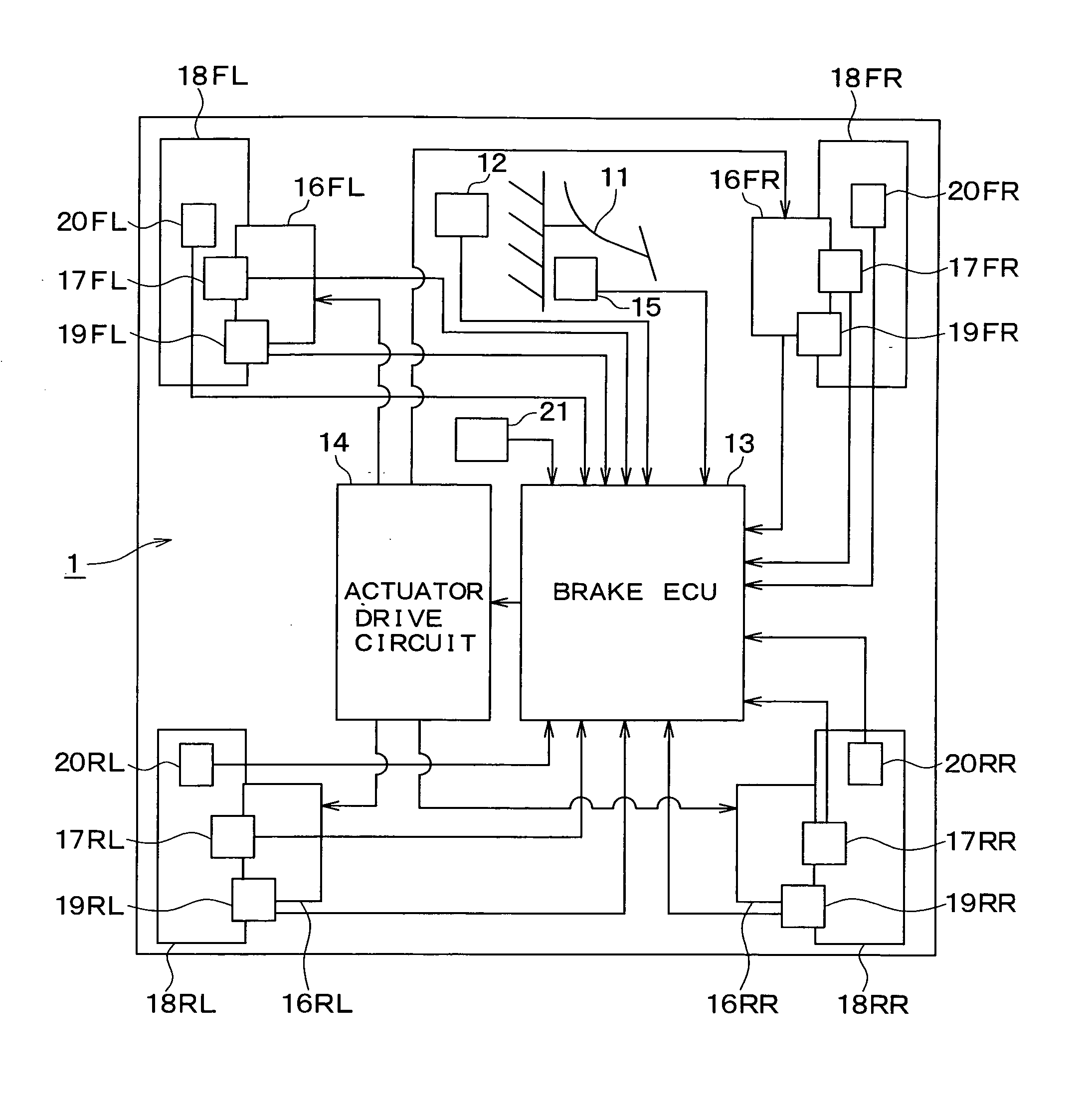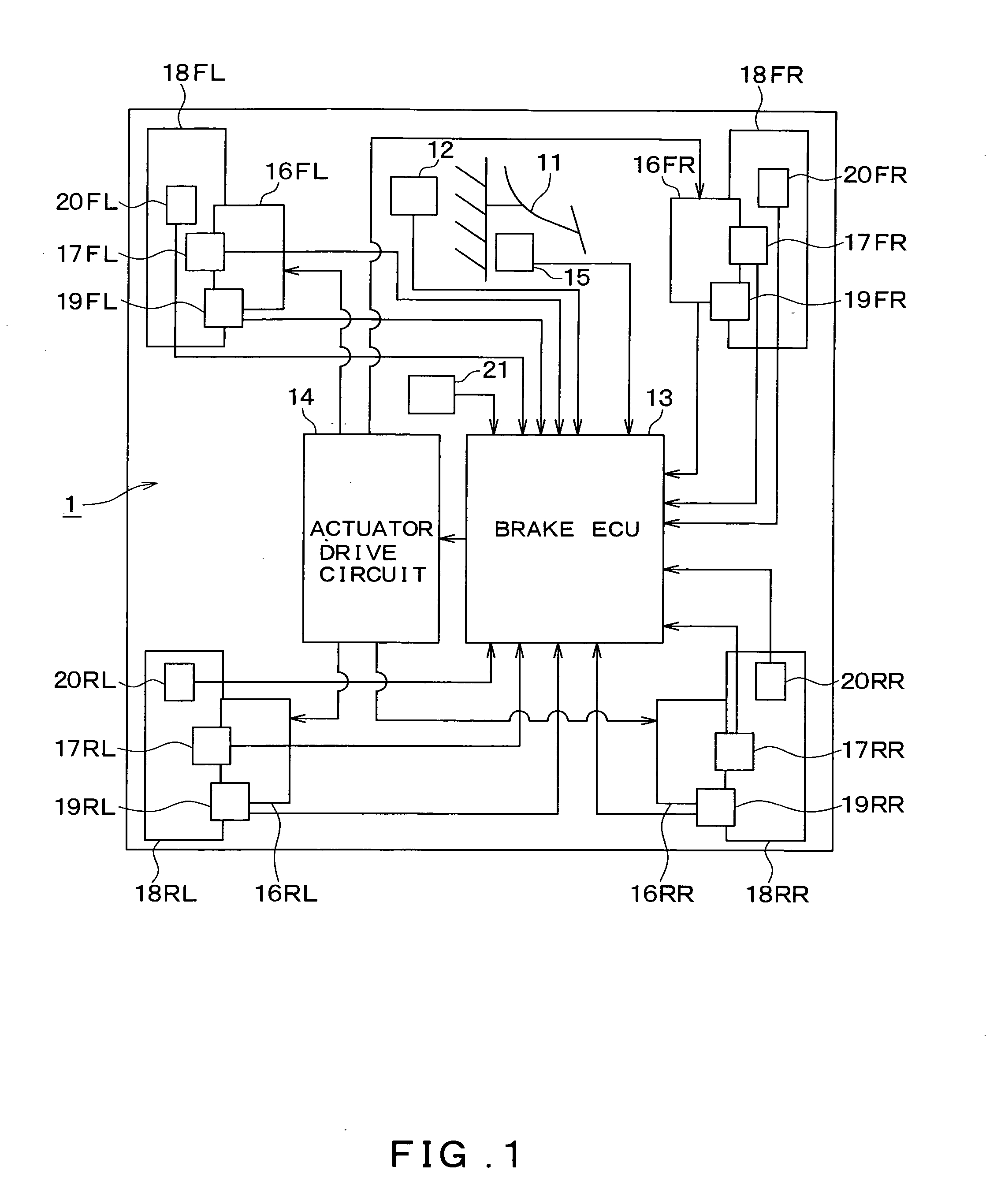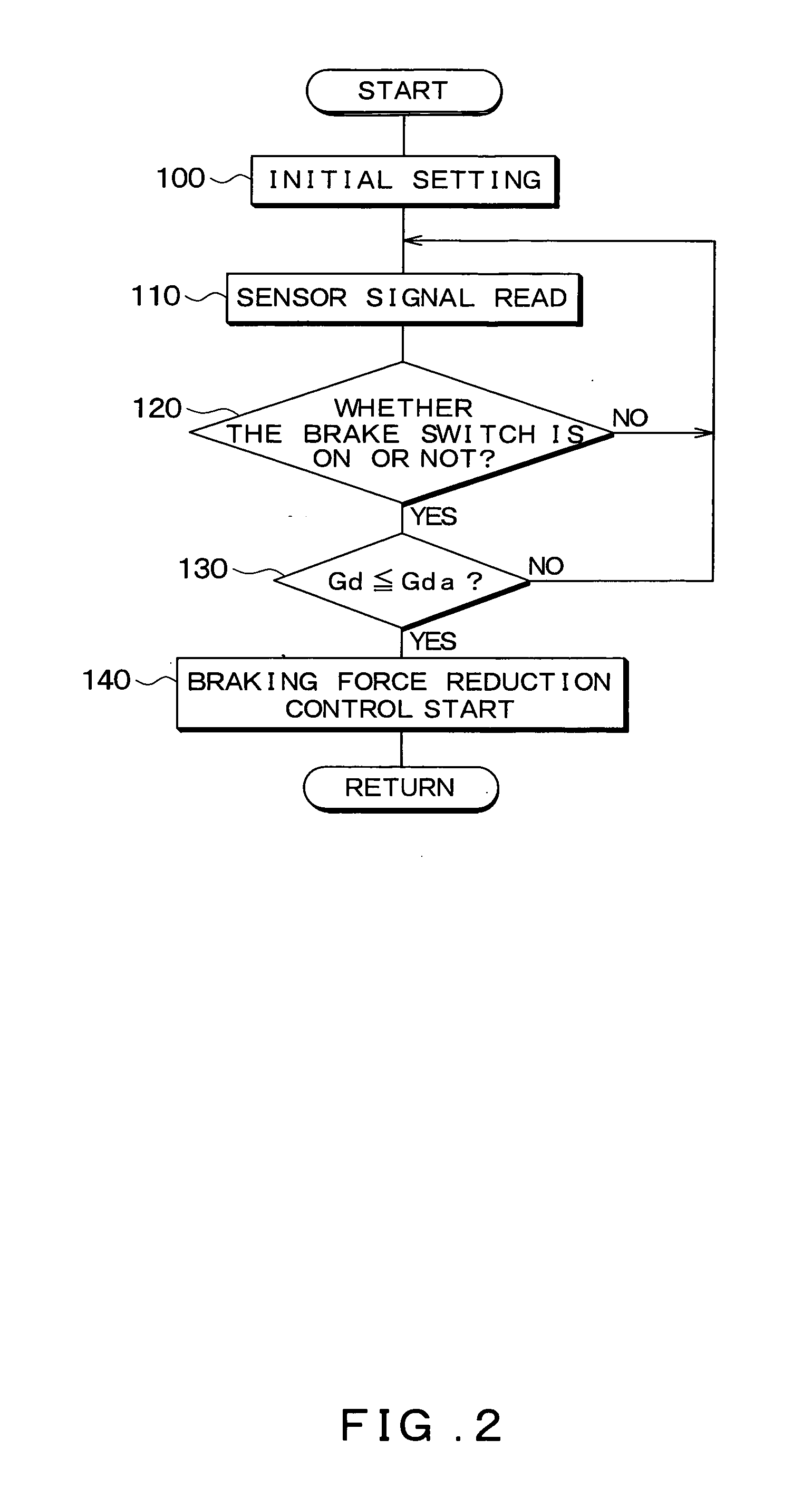Vehicle brake control device
a brake control and vehicle technology, applied in the direction of brake components, braking systems, vehicle components, etc., can solve the problems of difficult inability to accurately detect when the vehicle has stopped moving, and substantial calculation delay, so as to reduce the forward-backward rocking of the vehicle and shorten the braking distance
- Summary
- Abstract
- Description
- Claims
- Application Information
AI Technical Summary
Benefits of technology
Problems solved by technology
Method used
Image
Examples
first embodiment
[0034]FIG. 1 shows an overall block diagram of a vehicle brake control device 1 according to a first embodiment. Hereinafter, the configuration of the vehicle brake control device 1 of the present embodiment will be described with reference to FIG. 1.
[0035] Referring to FIG. 1, the vehicle brake control device 1 includes a brake pedal 11; a depression force sensor 12; a brake control unit (hereinafter “brake ECU”) 13; an actuator drive circuit 14; a brake pedal switch 15; actuators 16FL, 16FR, 16RL and 16RR; wheel cylinders 17FL, 17FR, 17RL and 17RR; clamping force sensors 19FL, 19FR, 19RL and 19RR; vehicle wheel speed sensors 20FL, 20FR, 20RL and 20RR; and acceleration sensor 21.
[0036] The brake pedal 11 functions as a brake operation member, and is connected to a stroke simulator (not specifically shown). When the brake pedal 11 is depressed by the driver, a brake fluid pressure that corresponds to the brake pedal depression amount is generated in the stroke simulator.
[0037] Th...
second embodiment
[0064] Next, a second embodiment of the invention will be explained. In this embodiment, the specific details of the braking force reduction control process performed by the brake ECU 13 are different to that of the first embodiment. However, all other structural features of the second embodiment are the same as those of the first embodiment. Accordingly, the explanation given here will not repeat the explanation of these structural features and will instead focus on those features that are different to the first embodiment.
[0065]FIG. 6 is a flow chart of the braking force reduction control process performed by the brake ECU 13 provided in the vehicle brake control device 1 of the second embodiment. The braking force reduction control process is repeatedly performed at a predetermined time interval when, for example, the ignition switch is turned on.
[0066] First, in the processing at 200 to 220, the brake ECU 13 performs the same processing as at 100 to 120 of the first embodiment...
third embodiment
[0076] Next, a third embodiment of the present invention will be described. This embodiment utilizes both (a) a post-stopping braking force control that is performed after the vehicle has stopped like the braking force reduction control process described in the first and second embodiments, and (b) a pre-stopping braking force control that is performed before the time when the vehicle completely stops like the braking force reduction control process described in Japanese Examined Utility Model Application No. H6-8959. Note that, the specific methods used for the post-stopping braking force control and the pre-stopping braking force control are the same as those described in the first and second embodiments and in Japanese Examined Utility Model Application No. H6-8959. Accordingly, the explanation provided here will focus on how switching between the two controls is performed, and a specific description of the controls will be omitted.
[0077]FIG. 8 is a flow chart showing the detail...
PUM
 Login to View More
Login to View More Abstract
Description
Claims
Application Information
 Login to View More
Login to View More - R&D
- Intellectual Property
- Life Sciences
- Materials
- Tech Scout
- Unparalleled Data Quality
- Higher Quality Content
- 60% Fewer Hallucinations
Browse by: Latest US Patents, China's latest patents, Technical Efficacy Thesaurus, Application Domain, Technology Topic, Popular Technical Reports.
© 2025 PatSnap. All rights reserved.Legal|Privacy policy|Modern Slavery Act Transparency Statement|Sitemap|About US| Contact US: help@patsnap.com



